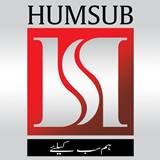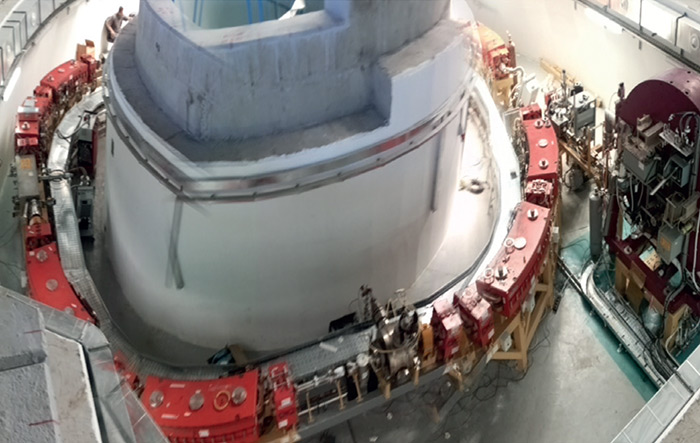Science centre unveiled in Jordan
Science centre unveiled in Jordan: Despite political tensions and rows, countries usually hostile to each other are jointly supporting the venture, by opening an advanced research centre today in Jordan which is to be shared by the troubled region.
Synchrotron-light for Experimental Science and Applications in the Middle East (Sesame), no pun intended, is a facility that hosts a synchrotron, a particle accelerator that acts as a powerful microscope. By generating intense beams of light, synchrotrons provide exceptionally detailed views of everything from cancerous tissue to ancient parchments to plant diseases.
Researchers from Iran, Israel and Palestine will now use the machine together. Sesame is a play on the famous phrase “Open Sesame” and is meant to signal a new era of collaborative science.
The new building is located amid the dusty hills some 35 km north of the capital Amman, surrounded by the olive groves.
Though the concept of a Middle Eastern synchrotron was first conceived almost 20 years ago, the turmoil in the region involving the three nations led to countless delays in finance, design and construction. It is believed that the endevours of the British physicist, Prof Sir Chris Llewellyn Smith, over the past decade as the chairperson of the project through a series of obstacles has helped transform this concept into a reality. Attending at the new facility Prof Llewellyn Smith admitted that he was “a bit surprised” that the venture had got so far.
He went on to say that “The real problem has been finding the money – the countries in this region have science budgets that you can hardly see with a microscope. And there’ve been many times in the history of this project when a rational person would say ‘let’s give up’ but it’s so important it’s kept going and here we are today.”
It is believed that the turning point came in 2012 when Israel, Iran, Jordan and Egypt each agreed to contribute US $5m provided that all the others did too. This helped acquire further finance from Italy and also from the EU which funded Cern, the international particle collider in Geneva, to manufacture the magnets that guide Sesame’s beams. Unesco has also provided support.
Though there are some 60 synchrotrons in use around the world but Sesame will be the first in the Middle East. The facility is expected to provide young scientists in the region with a reason not to emigrate to Europe or America.
Towards this cause Dr Gihan Kamel is an Egyptian who returned to the Middle East from a synchrotron in Italy in order to work at Sesame. She sees the facility as as crucial for establishing advanced science in the region enabling it to develop techniques for the early detection of cancer or for analysing key crops to improve agriculture or explore treasured documents like the Dead Sea Scrolls which are 2,000 years old. She says that it takes time to adjust to working with people from different religions and cultures but that the result of collaboration makes it worth it. “We are not building a paradise, it’s not an ideal place,” she told me.
Dr Kamel believes that the facility could help lead to key developments in medicine and biology. She said that “… we are creating something, we are giving hope for other people for other generations.”
Similarly, Prof Eliezer Rabinovici, a leading Israeli physicist, described the opening as “a very moving moment”. She went on to add “People and scientists from all over the region as well as many parts of the world have demonstrated that one can work together over decades for a common goal benefitting humanity. Today a tiny lighthouse is opened which can suggest another direction to the young generation.”
Last month the King Abdullah of Jordan, who is performing today’s opening ceremony at Sesame, recently criticised Iran over its role in the Syrian conflict.
When asked whether these tumultuous events make a collaborative project like Sesame too difficult, the senior Iranian scientist, Prof Mahmoud Tabrizchi, stated “Science is different from politics,” he said, describing Sesame as “the greatest event in science in the Middle East. Scientists are doing their job. Science is like water – it flows between the countries but it never runs out. So it is better to share with each other.”
Today’s opening ceremony is being attended by royalty, ministers or senior officials from the Jordanian, Cypriot, Egyptian, Iranian, Israeli, Pakistani, Palestinian and Turkish delegations, and by the heads of Cern, Unesco and the International Atomic Energy Agency (IAEA).
The first research using the synchrotron is due to start shortly with a “beam-line” using infra-red light with others to follow.
Due to the high cost of electricity in Jordan there are plans for a solar farm which would make Sesame the first synchrotron to be powered by renewable energy.
On a positive note discussions have already started about copying the Sesame model by building similar synchrotrons in other parts of the world including Africa and Central America.
For More News:
Visit HumSub TV

